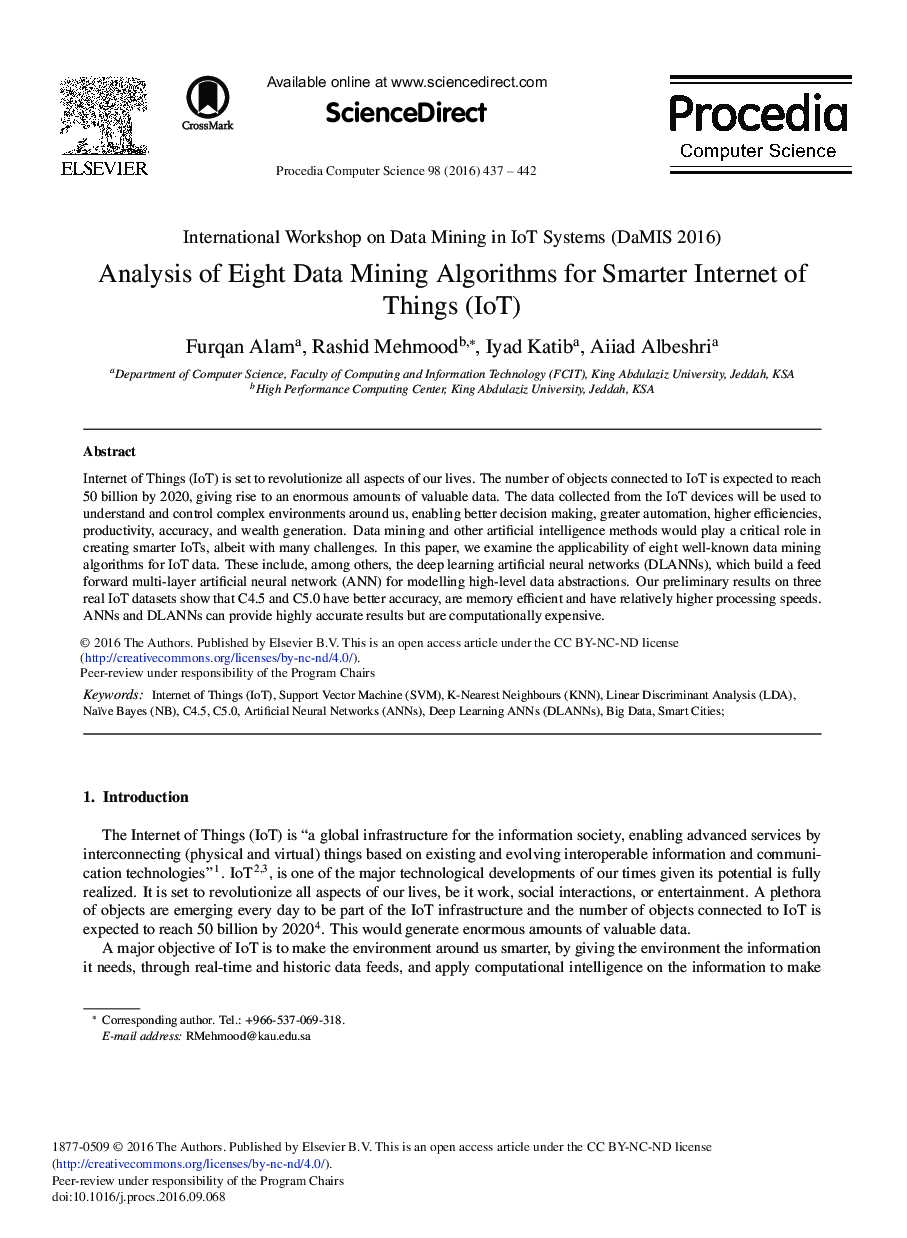| Article ID | Journal | Published Year | Pages | File Type |
|---|---|---|---|---|
| 4962070 | Procedia Computer Science | 2016 | 6 Pages |
Internet of Things (IoT) is set to revolutionize all aspects of our lives. The number of objects connected to IoT is expected to reach 50 billion by 2020, giving rise to an enormous amounts of valuable data. The data collected from the IoT devices will be used to understand and control complex environments around us, enabling better decision making, greater automation, higher efficiencies, productivity, accuracy, and wealth generation. Data mining and other artificial intelligence methods would play a critical role in creating smarter IoTs, albeit with many challenges. In this paper, we examine the applicability of eight well-known data mining algorithms for IoT data. These include, among others, the deep learning artificial neural networks (DLANNs), which build a feed forward multi-layer artificial neural network (ANN) for modelling high-level data abstractions. Our preliminary results on three real IoT datasets show that C4.5 and C5.0 have better accuracy, are memory efficient and have relatively higher processing speeds. ANNs and DLANNs can provide highly accurate results but are computationally expensive.
